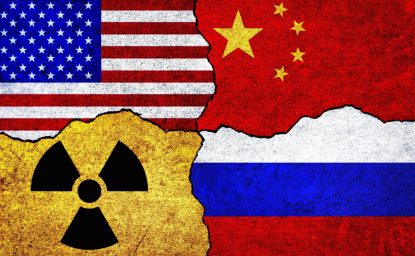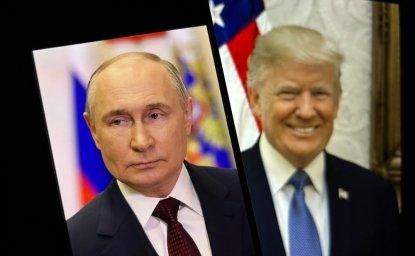Russia in Asia - Asia in Russia: Energy, Economics and Regional Relations

Given "the resources of the Russian Far East and Sakhalin, the region gives the Russian Federation the potential to shape economic relationships in Asia, as well provide a powerful source of leverage with its strategic partners," stated Eugene Lawson, President, U.S.-Russia Business Council, in opening a July 22-23, 2004 conference on the Russian Far East (RFE) and Northeast Asia (NEA) convened by the Wilson Center's Kennan Institute and Asia Program. "Situated on the borders of two of the world's top three energy markets, the Russian Far East is ideally suited to serve as a major energy supply link between Russia's oil and gas fields and China and Japan." Lawson cautioned that in addition to the formidable obstacles of geography and climate, the bureaucratic and political obstacles within the Russian Federation will likely continue to impede the development of Russia's energy resources in the region, in spite of the great demand within the immediate vicinity.
The first conference panel, featuring Alexander Fedorovsky, Head of Section, Pacific Studies, Institute of World Economy and International Relations, Moscow; Robert Orttung, Associate Research Professor, Transnational Crime and Corruption Center, American University; Visiting Scholar, Center for Security Studies, Swiss Federal Institute of Technology; and former Title VIII-Supported Short-term Scholar, Kennan Institute; and Josh Newell, author, The Russian Far East: A Reference Guide for Conservation and Development, provided a general overview of economic, political, and environmental conditions in the RFE.
The RFE contains a vast amount of territory, with a small and shrinking population. While some regions have seen their population decline by as much as two-thirds, the southern regions along the Chinese border have had only modest declines in population and in fact have experienced faster economic growth than the national average, according to Fedorovsky. That economic growth is almost completely linked to resource extraction (manufacturing is only about 10 percent of the economy). Sakhalin Island, site of several major energy development projects, is the single largest recipient of foreign direct investment in Russia.
Politically, the RFE seized a great deal of local autonomy during the 1990s. Orttung described how local leaders cooperated with local business to keep out influences from larger parties and larger businesses. With hostility to outsiders and an economy driven by extracting and quickly exporting resources from energy and minerals to timber and fish, corruption and criminality flourished, Newell explained. Even with President Putin exerting greater central control over the region in recent years, hostility to outside influence, especially in the form of foreign migration, remains.
The second panel, chaired by Paul Rodzianko, Senior Vice President, Access Industries, Inc., included Shawn McCormick, Vice President, International Affairs, TNK-BP; Michael Bradshaw, Professor and Head, Department of Geography, University of Leicester; Marshall Goldman, Kathryn W. Davis Professor of Soviet Economics, Wellesley College, and Associate Director, Davis Center for Russian and Eurasian Studies, Harvard University; and Nicholas Eberstadt, Henry Wendt Chair in Political Economy, American Enterprise Institute, examined the various energy projects and associated issues in the RFE.
McCormick discussed the TNK-BP proposal to build a pipeline from the Kovytka natural gas field in Siberia to China and South Korea.* Located near environmentally sensitive Lake Baikal, the Kovytka field has more natural gas than all of Canada. The proposed pipeline to supply China and South Korea would cover a distance longer than Washington, D.C. to Seattle, WA. According to McCormick, plans for the pipeline would need to be finalized within a year, before customers in China and South Korea decide to commit to Liquefied Natural Gas (LNG) instead of pipeline gas. Bradshaw next described the various energy projects underway on Sakhalin. The two oldest projects, Sakhalin-1 and Sakhalin-2, have been in development since the 1960s with Japanese participation and have only recently come on-line.
There is a larger battle over Russia's resources and how to get them to market, according to Goldman. Pipeline construction routes are contested by private companies interested in profits and governments interested in geopolitics and control over resources. The Russian government is particularly concerned about pipeline routes; they are anxious to avoid repeating their experience with building an expensive gas pipeline to Turkey, only to have Turkey decline to buy gas unless the price was reduced. The final speaker, Eberstadt, starkly illustrated the demographic and health challenges confronting the Russian nation and the RFE in particular.
The first day of the conference concluded with an address by Jeffrey L. Miller, Senior Vice President and Head of Export Finance, Export-Import Bank of the United States. Miller described the Ex-Im Bank's role in financing American goods and services to the various energy projects in the RFE. He noted the promise for those energy projects for promoting regional economic integration and sparking economic development that in turn would provide even greater opportunities for U.S. businesses seeking to enter the markets of the region.
The second day of the conference focused on the NEA nations and their relations with their Russian neighbor. The introductory speaker, Robert Sutter, Visiting Professor, Department of Government, Georgetown University, and former National Intelligence Officer for East Asia and the Pacific, U.S. National Intelligence Council, described the region as having states with strong, assertive governments that are strongly nationalistic and competitive. Sutter stated that regional rivalries persist, making it is difficult for governments to cooperate or respond to outside pressure. As a result, governments feel insecure and seek to avoid making definite decisions and keep their options open as long as possible.
The third panel, chaired by Robert Manning, Senior Counselor, Energy, Technology and Science Policy, Office of Policy Planning, U.S. Department of State, featured presentations by James Dorian, international energy economist, Washington, D.C.; Joseph Ferguson, Director of Northeast Asia Studies, National Bureau of Asian Research; and John Fetter, President, FSI Energy on the energy demands of China, Japan, and Korea, respectively.
Dorian noted that China overtook Japan last year as the world's second largest consumer of energy. Domestic coal is China's primary source of energy for electricity generation (70 percent today), but the central government is seeking to increase reliance on natural gas to improve air quality. That gas must be imported, and China must compete with the other nations in the region for those gas supplies. Right now, power outages are common in two-thirds of China. In order to maintain economic growth, Dorian contended, China must lock in reliable sources of energy for power generation.
Ferguson stated that Japan is eager to help develop energy projects in Russia, in spite of political difficulties over Russia's Kurile Islands, which the Soviet Union seized from Japan in the closing days of WWII and have been claimed by Japan ever since. Japan is a prime driver behind the proposed pipeline route from the Kovytka field to the port city of Nakhodka, although, Ferguson noted, there is little private interest in financing the enormous costs.
Finally, Fetter described the positive economic and discouraging political factors surrounding a proposed gas pipeline from Sakhalin Island to South Korea. According to Fetter, the Sakhalin pipeline would cost $3.5 billion compared to $18 billion for a Kovytka-Nakhodka pipeline. The Sakhalin pipeline, however, would have to go through North Korea. Fetter set out the case for the pipeline to be considered as an element in a solution to resolve the larger North Korean nuclear issue.
Concluding the conference, panelists Gilbert Rozman, Musgrave Professor of Sociology, Princeton University; Elizabeth Wishnick, Research Associate, Weatherhead East Asian Institute, Columbia University; and Daniel B. Poneman, Principal, Scowcroft Group, with panel chair Robert Hathaway, Director, Asia Program, examined the political and security relations in Northeast Asia, including Russia.
Rozman argued that in the post-Cold War period the power dynamic of the region shifted from a Moscow-Washington orientation to Beijing-Tokyo. He stated that the nations of NEA are returning to an emphasis on their Asian identity as the region becomes more economically integrated (regional trade has shot from $50 to $300 billion in recent years). Within this context, and especially on economics, it is difficult for Russia to fit, contended Rozman. However, the central governments have taken a greater interest in regional integration, and are supporting the goals of integration politically.
Wishnick illustrated a number of issues, including migration, corruption, and globalization, that have security implications for the region and further complicate integration. The RFE has a population of 6.8 million along the China border. Over the border in northeast China, the population is 100 million and the local economy is not strong. While local leaders in the RFE claim that "millions" of Chinese migrants are swamping the region, the truth is that Chinese workers seldom stay long in Russia. The fear of foreigners in the RFE has spurred bureaucratic hurdles to migration that do more to encourage corruption and criminality than stem population flows, according to Wishnick.
Finally, Poneman discussed the history of nuclear proliferation in the region and in North Korea in particular. North Korea has been extremely adept at playing other nations against each other in concealing prohibited programs and violations of the Nuclear Nonproliferation Treaty it signed in 1985. Now it has pulled out of that treaty, and is believed to have the capacity to build six nuclear weapons a year. Poneman argued that the current U.S. policy towards North Korea is one of "no carrots and no sticks." He predicted that if North Korea successfully tests a nuclear weapon, then other NEA nations, especially Japan and South Korea, would be forced to seek nuclear weapons of their own. An even more frightening outcome, Poneman warned in conclusion, would be "…North Korea not as a possessor and wielder of nuclear weapons, but as an exporter."
*The original version of this report stated that TNK-BP planned to build a pipeline from Kovytka to the Russian port of Nakhodka. The Kennan Institute regrets this error.
Author


Kennan Institute
After more than 50 years as a vital part of the Wilson Center legacy, the Kennan Institute has become an independent think tank. You can find the current website for the Kennan Institute at kennaninstitute.org. Please look for future announcements about partnership activities between the Wilson Center and the Kennan Institute at Wilson Center Press Room. The Kennan Institute is the premier US center for advanced research on Eurasia and the oldest and largest regional program at the Woodrow Wilson International Center for Scholars. The Kennan Institute is committed to improving American understanding of Russia, Ukraine, Central Asia, the South Caucasus, and the surrounding region through research and exchange. Read more

Explore More
Browse Insights & Analysis
US Inaction Is Ceding the Global Nuclear Market to China and Russia

360° View of How Southeast Asia Can Attract More FDI in Chips and AI

